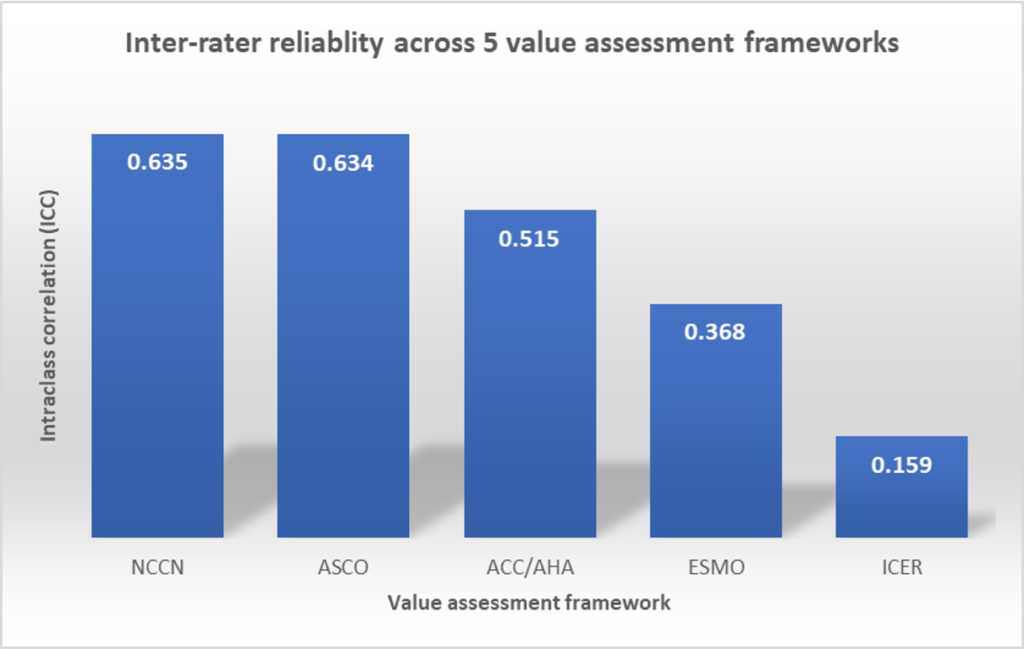A new drug comes on the market. Is the health benefit worth the cost? What is it’s value? Value assessment frameworks are one way to answer this question. Value frameworks take the evidence of the treatments benefits, risk and cost and output some notion of the treatment’s value. Ideally, if anyone applied a given value framework, they would get the same or at least similar answers regarding the treatments true value. But is that the case in practice?
A paper by Karas et al. (2021) aims to provide the answer. The authors conducted a retrospective, observational study at a single health system. They examine how three individuals–a fourth-year pharmacy student, a drug information resident, and a drug information pharmacist–applied the value assessment frameworks to the same drug. The value assessment frameworks evaluated were three oncology-specific value frameworks (i.e., ASCO, ESMO, and NCCN) and two non-oncology (the ACC/AHA framework and the ICER calculation). The key statistical measure of interest was the intraclass correlation coefficient (ICC), which was used to measure inter-rater reliability. Using this approach as applied to 94 medications, the authors found that:
…[t]he VAFs [value assessment frameworks] with the highest ICCs between all 3 raters were NCCN (0.635; 95% CI = 0.387-0.823) and ASCO (0.634; 95% CI = 0.370-0.832), both indicating moderate inter-rater reliability. The VAFs with the lowest ICCs were ESMO (0.368; 95% CI = 0.126-0.611) and ICER (0.159; 95% = CI −0.018-0.365), with ICCs corresponding to poor reliability.

This does not necessarily mean that NCCN and ASCO are ‘better’ as a very simple value framework may be easy to use and have ICC, but it may miss many value elements. The incremental cost effectiveness ratio (ICER) approach has the advantage of being very flexibility to different disease areas, but–likely in part due to this flexibility–it can be applied differently by different individuals.
Source:
- Karas BL, Picone MF, Werner S, Holsopple M. Verifying the value of existing frameworks for formulary review at a large academic health system: assessing inter-rater reliability. Journal of Managed Care & Specialty Pharmacy. 2021 Apr;27(4):488-96.